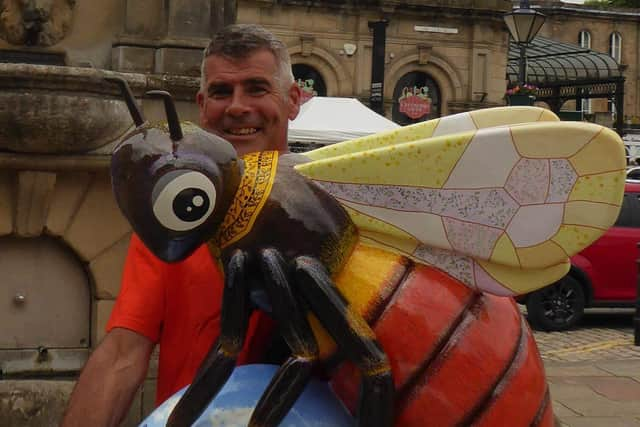Friends of Buxton Station: weeds feed bees
and live on Freeview channel 276
The warm sunny rays have woken up our pollinating friends from their happy slumber. Then they are straight to work, collecting nectar and early pollen to raise and feed their developing colonies of worker bees. But there is a problem for some queens as they appear in floral deserts, especially those up on the moorland surrounding Buxton!
Living on energy stored months ago, they soon tire out looking for new food supplies. The hungry bees cast about in search of food, further and further from their nests, using up their valuable energy and making the journey home almost impossible.
Advertisement
Hide AdAdvertisement
Hide AdThey often end up in town and need you to help them out by allowing plants normally thought of as weeds to flourish. Especially important right now are dandelions that are thriving – they’re quite open flowers, so good for bees with short tongues as well as those with much longer ones.


There’s a clever school of thought that maintains “a weed is just a wild flower in the wrong place!”. Bees can’t differentiate, taking advantage of energy-rich nectar wherever they can! Especially if it means survival.
Many native wildflowers can tolerate harsh conditions, so are often the first to show and thrive at this time of year. Before you pull them up as weeds, please stop and think about the bees.
Dave Carlisle, Chairman of the Friends of Buxton Station, a voluntary group who won a national award in 2021 for their bumblebee conservation work targeting the Bilberry bumblebee said: “We are not suggesting folk allow their gardens to become overgrown thistle-strewn wastelands or bramble-filled nettle-runs, but rather to fall in love with a few weeds for a few weeks in the corner of their gardens for the sake of the bees: let them flower to provide food before deadheading to stop seed dispersal.”
Advertisement
Hide AdHe added: “And hang fire with the lawn mower, see what grows. If weeds like dandelions are growing where you really can’t tolerate them, dig them out or spot treat with natural non-toxic products like pelargonic acid. Please don’t spray.”
Advertisement
Hide AdFoBS have a number of initiatives lined up to help our local bees once again this year, including more extensive wildflower seed dispersal and more campaigning to raise awareness about the Bilberry bumblebee, a cold-adapted species found on moorland surrounding Buxton.
FoBS are also keen to spread the message that kindness can kill a bumblebee: people with the best intentions can sometime cause more harm good:
- Tired bumblebees can rest for up to 45 minutes, so please leave them alone unless in danger of being stepped-on.
- If you need to move one to a safer place, allow it to crawl onto something in your hand and gently guide it onto a nearby flower/weed.
- Don’t ‘feed’ bees with honey or sugar water. If hungry, the bee will feed from the flower or weed.
- Bumblebees are quite hairy and well-able to withstand the cold, so never take them indoors or put them in a box as they will over-heat.
- A resting bumblebee isn’t a stranded bumblebee. Think #FlowersFirst. Offer sugar-water ONLY if there are no flowers and 45+ minutes has passed.